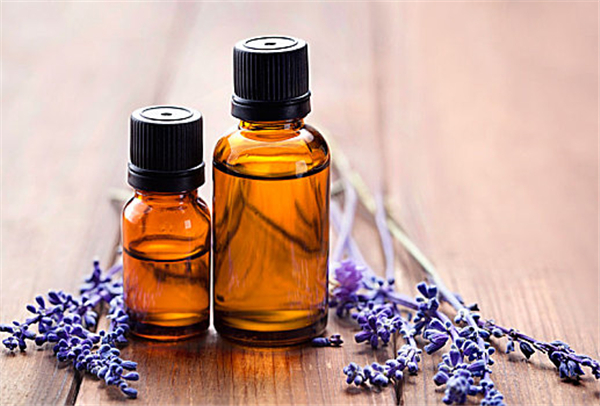Process requirements
The steam distillation process mainly has the following points.
(1) Preparation work
Plant material collected for distillation should contain as little non-essential oily parts as possible. If the raw materials are mainly flowers, there should be as few stems and leaves as possible, especially grass and debris containing odor should not be included. The distillation processing point should be selected close to the planting area or where resources are relatively concentrated, and long-distance transportation should be avoided as much as possible. During transportation and loading, excessive stacking should be avoided as much as possible to prevent the raw materials from being heated due to pressure and causing oil loss. Raw materials for distillation generally require timely processing, with some exceptions. Before distillation, reasonable pretreatment measures should be determined based on the characteristics of each raw material variety and the nature of the raw materials, such as cutting, crushing, storage, or soaking.
When using new or long-term equipment, as well as equipment that has been distilled with other spices, they should be thoroughly washed and air-steamed until all bad smells are removed.

(2) Loading
After adding water to the distillation pot, put the partition in place and then load the raw materials into it. The basic requirements for loading are uniformity and uniform looseness, and the surroundings should be compacted. The loading density should be appropriate, not too tight or too loose. If it is too tight, it will be difficult for water vapor to pass through, which will prolong the distillation time and affect the oil yield and oil quality; if it is too loose, the loading capacity will be reduced and the equipment efficiency will be affected. Generally, the charging volume is 70%-80% of the effective volume of the steamer.
(3) Heating
There are generally three methods of heating: direct heating at the bottom of the pot, indirect steam heating and direct steam heating. No matter what distillation method and heating method is adopted, heating should be slow at the beginning of distillation. The slow heating stage should generally be maintained for 0.5-1h. Then the heat source can be gradually increased according to the distillation needs to maintain the normal distillation speed. During the distillation process, the heat source supply must be kept stable and should not be large or small. 10-15 minutes before the end of distillation, the fire power or steam volume should be increased so that the remaining essential oils in the raw materials can be distilled out as much as possible.
(4) Distillation speed
For any distillation method, the flow rate should be small at the beginning and can be gradually increased later. In terms of the volume of the still pot, the distillation rate is often taken to evaporate 5%-10% of the liquid in the still pot volume every 1 hour.
(5) Distillation end point
Reasonable selection and determination of the distillation end point is very important. It is not only related to issues such as saving fuel and time, improving equipment utilization and reducing costs, but also related to the yield and quality of essential oils. Theoretically, the end point of distillation is when the total amount of essential oil obtained no longer increases with the extension of distillation time. But in actual production, when 90%-95% of the total amount of essential oil is evaporated, it can be regarded as the end time of distillation. There are generally three methods to determine the end point of distillation: oil drop observation method, distillation curve measurement method and phosphotungstic acid solution test method.
(6) Condensation
Condensation of steam mixtures of essential oils and water, most require cooling to room temperature. Flower essential oils should be cooled below room temperature. For essential oils with high viscosity, high boiling point, and easy condensation, such as vetiver oil, luan tail oil, etc., the condensation temperature is generally maintained at 40-60°C.
(7) Oil-water separation
According to the different densities of essential oil and water, an oil-water separator is used to separate them. In order to enhance the effect of oil-water separation, two or more oil-water separators can be used in series. Generally, the form of intermittent oil discharge and continuous water discharge is adopted.
(8) Crude oil refining
The direct crude oil separated from the oil-water separator and the crude oil in water recovered from the distilled water must be purified and refined separately. The purification and refining process generally includes three steps: clarification, dehydration and filtration. The direct crude oil is called "direct oil" after purification and refinement, and the crude oil in water is called "oil in water" after purification and refinement. After direct oil is mixed with oil in water, it becomes an essential oil product.
The characteristics of the steam distillation method are: hot water can penetrate plant tissue and effectively steam out essential oils. The equipment is simple, easy to operate, low cost, and large in output. Essential oils can be produced from most aromatic plants using steam distillation. However, the ingredients are prone to chemical changes when heated, and it is not suitable for essential oils with a relatively high content of water-soluble components, such as jasmine, violet, acacia, hyacinth and other flowers.
Among the most commonly used and large-volume natural plant flavors, a large part are produced by steam distillation, such as peppermint oil, spearmint oil, patchouli oil, lavender oil, rose oil, white orchid leaf oil and cinnamon oil, Fennel oil, eucalyptus oil, ylang-ylang oil, etc. Citronella oil, an important semi-synthetic raw material, is also produced using steam distillation.
Oleoresins Introduction
Stainless Steel Mixing Equipment Application
Plate Centrifuges Application
Contact: Project Manager
Phone: +86-18120438367
Tel: +86-18120438367
Email: info@tycoretech.com
Add: No. 1, Optics Valley Avenue, East Lake New Technology Development Zone, Wuhan, Hubei, China
We chat
